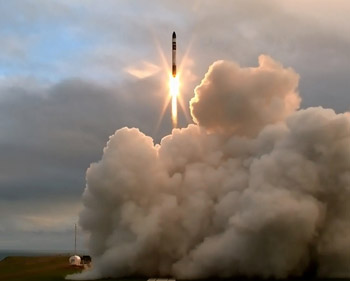INDIAN ARMED FORCES CHIEFS ON OUR RELENTLESS AND FOCUSED PUBLISHING EFFORTS

The insightful articles, inspiring narrations and analytical perspectives presented by the Editorial Team, establish an alluring connect with the reader. My compliments and best wishes to SP Guide Publications.

"Over the past 60 years, the growth of SP Guide Publications has mirrored the rising stature of Indian Navy. Its well-researched and informative magazines on Defence and Aerospace sector have served to shape an educated opinion of our military personnel, policy makers and the public alike. I wish SP's Publication team continued success, fair winds and following seas in all future endeavour!"

Since, its inception in 1964, SP Guide Publications has consistently demonstrated commitment to high-quality journalism in the aerospace and defence sectors, earning a well-deserved reputation as Asia's largest media house in this domain. I wish SP Guide Publications continued success in its pursuit of excellence.
3D Rocket in Space
 |
By Lt. General P.C. Katoch (Retd) Former Director General of Information Systems, Indian Army |


in Stade, Germany on 21 November 2015
The first working 3D printer was developed in 1984 by Chuck Hall of 3D Systems Corporation; 3D printing being the process of making three dimensional solid object of any shape from a 'digital model', achieved by laying successive layers of material in different shapes — termed 'additive process'. By 2012, global market of 3D printers and services was estimated at $2.2 billion. According to a new market research report '3D Printing Market' by Printer Type, Material Type (Metals, Plastics, Ceramics & Others), Material Form (Powder, Liquid, Filament), Process, Technology, Software, Service, Application, Vertical and Geography - Global Forecast to 2022", the 3D printing market is expected to reach $30.19 Billion by 2022. 3D printers are available online and Indian companies too are selling these.
In 2015, US company 'Stratasys' set up its India operations in Bengaluru under the 'Make in India' program, after experiencing over 60% growth in business over the past 10 years. However, what is noteworthy is the terrific pace at which advancements in science and security related 3D printing is taking place. It was only in November 2013 that the Texas-based company 'Solid Concepts' made the first metal gun using a 3D printer, taking the ability to acquire a firearm to a new level. The company claimed that the gun (with 33 mostly stainless steel parts and carbon-fibre handgrip), copy of the Browning hand-made pistol used in the Philippines-American War, was successfully test fired using 50 bullets, some hitting bulls eye over a distance of 30 yards.
Earlier on 8 May 2013, 'The Mail' printed the first plastic gun in UK using a 3D printer at a cost of Pound 1,700, also taking it on board a fully packed Eurostar train on 10 May 2013 without being stopped through tight security. This plastic gun named 'Liberator' 3D printed from designs available on internet comprises 16 parts; all plastic that do not trigger any alarm by metal detectors. Developing cost is just $25 if one has the 3D printer.
At the International Aerospace Exhibition and Air Show held in Berlin during June 2016, Airbus, the European aerospace giant, showcased its 3D printed drone named 'THOR'; acronym for 'Test of High-tech Objectives in Reality'. Developed over a course of about a month, it is 13 feet long and weighs 55 pounds. Thor had already been test flown in November 2015, and Airbus had planned 18 more test missions during 2016. Given the flexibility of 3D printing, Airbus plans to capitalize on Thor even if it is not useful as an independent product; laying the groundwork for future 3D products and their applications. Now New Zealand has made a quantum jump in 3D applications with a 3D rocket launch on May 25; the 'Electron' rocket launched successfully from a private launch site on its territory, making New Zealand 11th country to launch into space. RocketLab, an American-New Zealand aerospace company, broke new ground when its rocket reached space at 16:23 NZST (0423 GMT). 'Electron' lifted off from New Zealand's Mahia Peninsula. It was the first orbital-class rocket launched from a private launch site in the world. New Zealand plans two more similar tests this year. Rocket Lab plans to get into orbit with the second test and look to maximize the payload the rocket can carry.
On achieving full production, the company expects to launch more than 50 times a year and is regulated to launch up to 120 times a year. New Zealanders are particularly thrilled they have left Australia behind in the race to space, even though 'Electron' reached space but did not get into orbit. It took under four years for the RocketLab team to build the rocket from scratch using an entirely new propulsion cycle, and it was the world's first orbital-class rocket launched from a private site. RocketLab plans to build New Zealand as a base for launching small satellites into low orbit. It is being said that this will give competition to India and China in terms of low cost launch services. This should be of no worry to India as ISRO has been showing the world how to cut costs, be it rockets, satellites or launch services. Besides, there is nothing stopping ISRO in optimizing 3D technology.





